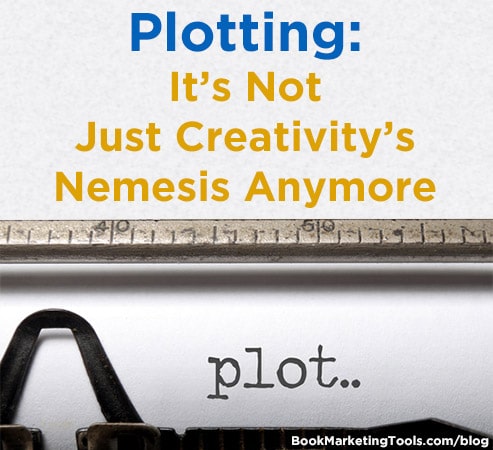Writing a great story is one of the best things you can do for your book. But, how you get to that great story differs for people. Some like to plot the whole book before they write a word, and others don’t want to plot at all. Author Sydney Katt shares another option for plotting without ruining your creativity.
When it comes to the actual craft of writing, I think the subject of plotting is almost as contentious as whether to look for an agent or to go indie. People who love to plot will tell you about how plotting the story in advance cuts down on writer’s block and allows you to tell a tighter story that needs less revision in later stages. And what do the people who hate to plot have to say?
Plotting will eat your children.
Okay, not really. But the anti-plotters do tend to agree that having the rigid framework of their outline steals their creativity and makes for a cookie-cutter tale. Some will also say that they don’t know their characters well enough at the plotting stage to know what kind of trouble they’ll get themselves into.
As I was writing the first four books of my suspense series, I got to play around with the process. Am I a die-hard plotter? Or am I just as surprised by the twists and turns as my characters are as I write? Short answer: Yes.
Welcome to the world of Outline Lite. All the great timesaving goodness you love with less of the creativity-sucking structure you don’t.
Know Your Beats
I’ve actually never been a fan of putting a scene-by-scene outline on paper prior to firing up the computer. I do devote a lot of time to thinking about the story before I start though. A lot.
If you’ve ever read Save the Cat! by screenwriter Blake Snyder, you know what I mean by beats. (And if you haven’t, it’s amazing advice for novelists and screenwriters alike.) Basically, a beat is an important moment in your story. These can come in the forms of your:
- Inciting moment
- Midpoint
- Plot twist
- Resolution
There are others, but you see where I’m going. The point is to figure out the biggest moments of your story and commit them to paper. This gives you a roadmap of critical destinations without dictating whether you take the expressway or a winding scenic route.
Plotting As You Go
Another tactic that I’ve been known to use when writing a novel is to allow myself to start writing the story without any sort of outline. The goal is to write as much of the story as I can before I hit the wall. For me, that usually happens around 25k or 30k words. And when I hit the creativity wall, I hit the wall.
Once I’m stuck, I consider the course my characters are on and how it relates to where I want them to be. By now, I know my characters well enough to understand what type of trouble they’re destined to get themselves into on the way to the next destination. This is the point where I outline.
But I don’t go crazy with the outline. I’ll think about the next 20 or 30 scenes and write down a sentence or two about who’s on the page and what they want. That’s it.
And when I hit another wall shortly after writing all those plotted scenes? You guessed it. I tackle the next batch.
Don’t Marry Your Outline
Whether you’re doing a full-blown, in-depth outline or you’re only plotting out the most crucial elements of the story, don’t get too attached to what you have. Ideas are fluid. There’s no reason why you must discard that epiphany you had in the shower about how your protagonist will learn the world isn’t what it seems simply because it wasn’t part of the original outline.
If a new idea doesn’t fit your outline, change the outline to fit the idea.
Of course, use caution when trashing your outline. Before you alter the events getting you from inciting moment to resolution, ask yourself whether the new scenes are true to the story you want to tell. Do they help the reader understand the character? Do they allow readers to fully immerse themselves in your world?
Or is the scene just a new shiny that will be fun to write yet do nothing to propel your characters toward their ultimate goal?
Remember, your outline is just that: Yours. Let your plotting work guide you through the story when inspiration is in short supply and take a backseat when the ideas are pouring from you like Niagara Falls.
And, maybe feed your outline with a few words from time to time… just so your children don’t start looking delicious.
Sydney Katt is a sarcastic sexy suspense author with Random Distraction Publishing who loves helping other writers with their craft. She has three cats, reads constantly and knows exactly how many bodies will fit in the trunk of her car. To learn more about Sydney’s upcoming works, get her take on real-world paranormal phenomena or laugh at cat memes, you can connect with Sydney at www.sydneykatt.com or www.facebook.com/AuthorSydneyKatt.


